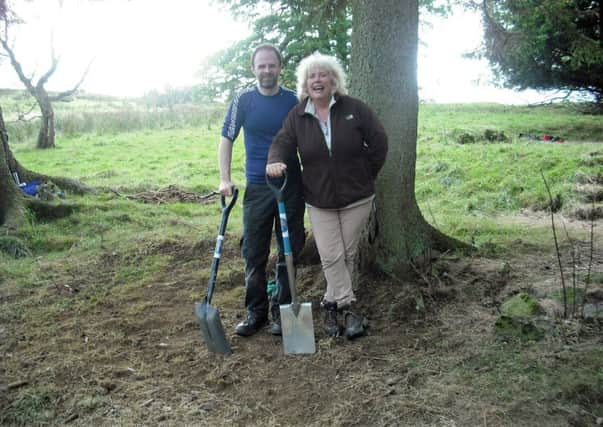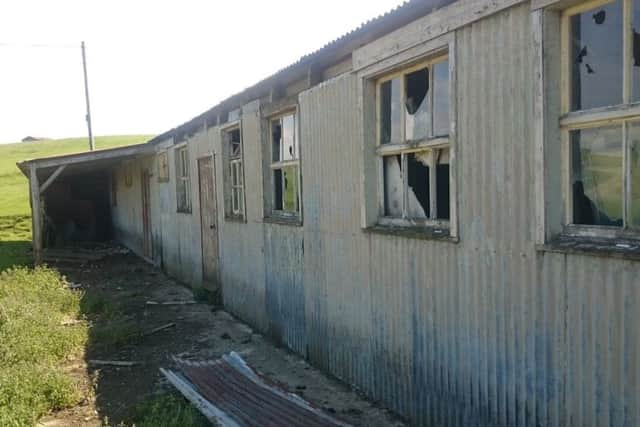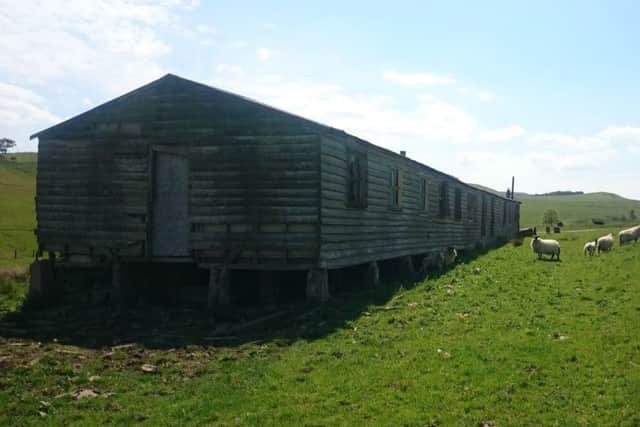Prison camp project set to yield tourism boost for Hawick


Stobs Camp was home to 4,500 German prisoners during the First World War, having previously been the main training base for British soldiers in Scotland at the turn of the 20th century.
Now, a project, launched as part of Scotland’s year of history, heritage and archaeology, and led by Archaeology Scotland, aims to reveal the camp’s remaining secrets.
Advertisement
Hide AdAdvertisement
Hide Ad“Not only is this an internationally significant site that has been crying out for recognition and interpretation for years, but it will provide yet another reason to visit historical Hawick and its beautiful surrounding valleys,” said Simon Lynch, a facilitator with the Scottish Border Council Leader project team helping fund the work.


Council archaeologist Chris Bowles started putting together a project proposal several years ago, having identified the potential of the site, and after securing the support of Archaeology Scotland and Historic Environment Scotland, it has now come to fruition.
He said: “This really is a huge project and will be one of the biggest archaeology projects in Scotland.
“Stobs Camp is of international significance because of the excellent state of preservation of some of its infrastructure. It is the best preserved First World War internment camp in the world and was the headquarters of the prisoner-of-war camp system in Scotland.
Advertisement
Hide AdAdvertisement
Hide Ad“This project is important as, without it, there is a real danger that the story of Stobs will be lost and the buildings that remain will deteriorate further.


“Our aim is to develop a management plan for the site, improve access for visitors and create the necessary interpretation materials, including an app, to make sure the important role this site played during the First World War is remembered. The site has quite a few stories to tell.”
The site was acquired by the UK Government from the owners of the Stobs Castle Estate in 1902, and the following year it was established as the main training base for British soldiers in Scotland, hosting 20,000 troops in its first full year.
A new siding off the former Waverley Line enabled supplies to be brought into camp and soldiers to disembark.
Advertisement
Hide AdAdvertisement
Hide AdOver the course of the following decade, the camp became less busy due to lack of space to carry out all necessary training, and it ended up only being used by the Army during the summer.


That threw its future into doubt, but after the outbreak of war in 1914, its infrastructure made it an obvious choice to hold prisoners of war.
Initially, the camp was home to German civilians living in the UK who either voluntarily gave up their liberty or were arrested.
They were followed by an influx of German military and naval prisoners.
Advertisement
Hide AdAdvertisement
Hide AdAfter the camp got too crowded, the original civilian internees were moved to the Isle of Man.


Evidence exists of prisoners putting on plays and recitals, and they were allowed to produce a newsletter and send it back to their families.
They were also permitted to establish camp businesses, and many of the prisoners made decorative domestic objects sold in Hawick town centre.
Archaeology Scotland project officer Andrew Jepson said: “Stobs Camp has a fascinating story to tell and, so far, we have only just scratched the surface.
Advertisement
Hide AdAdvertisement
Hide Ad“In some respects, this is relatively recent history we are dealing with, so, as part of the project, we will be gathering and recording oral stories of the camp as they passed from one generation to the next.
“We are also fortunate in that there are some amazing photographs of the camp and its infrastructure. These will be invaluable for providing an insight into camp life.”
Dianne Swift, Archaeology Scotland’s project manager, added: “We are now able to take the project forward to record, for the first time, a full story of Stobs Camp.
“We also aim to establish a management plan that will ensure the remains are appropriately protected and maintained and accessible to a wider audience.
Advertisement
Hide AdAdvertisement
Hide Ad“The support of all the partners in this project is vital, and we are delighted to have already engaged with a range of local organisations and schools and would encourage anyone else keen to be involved to get in touch.”